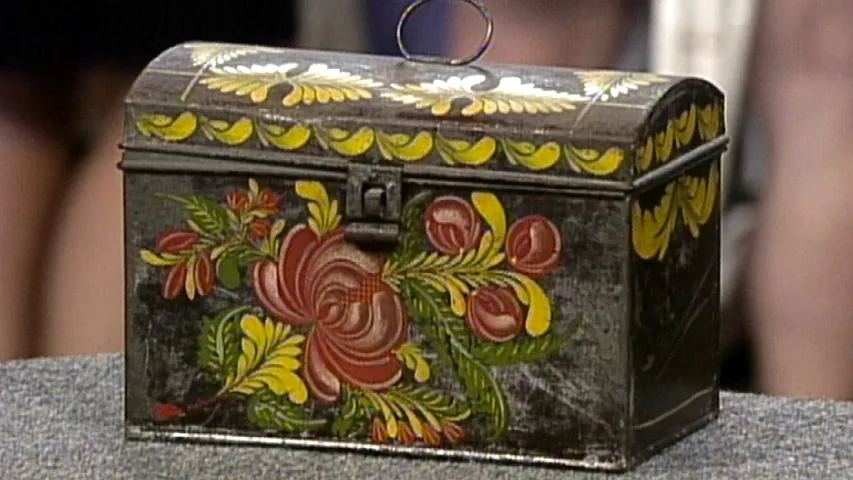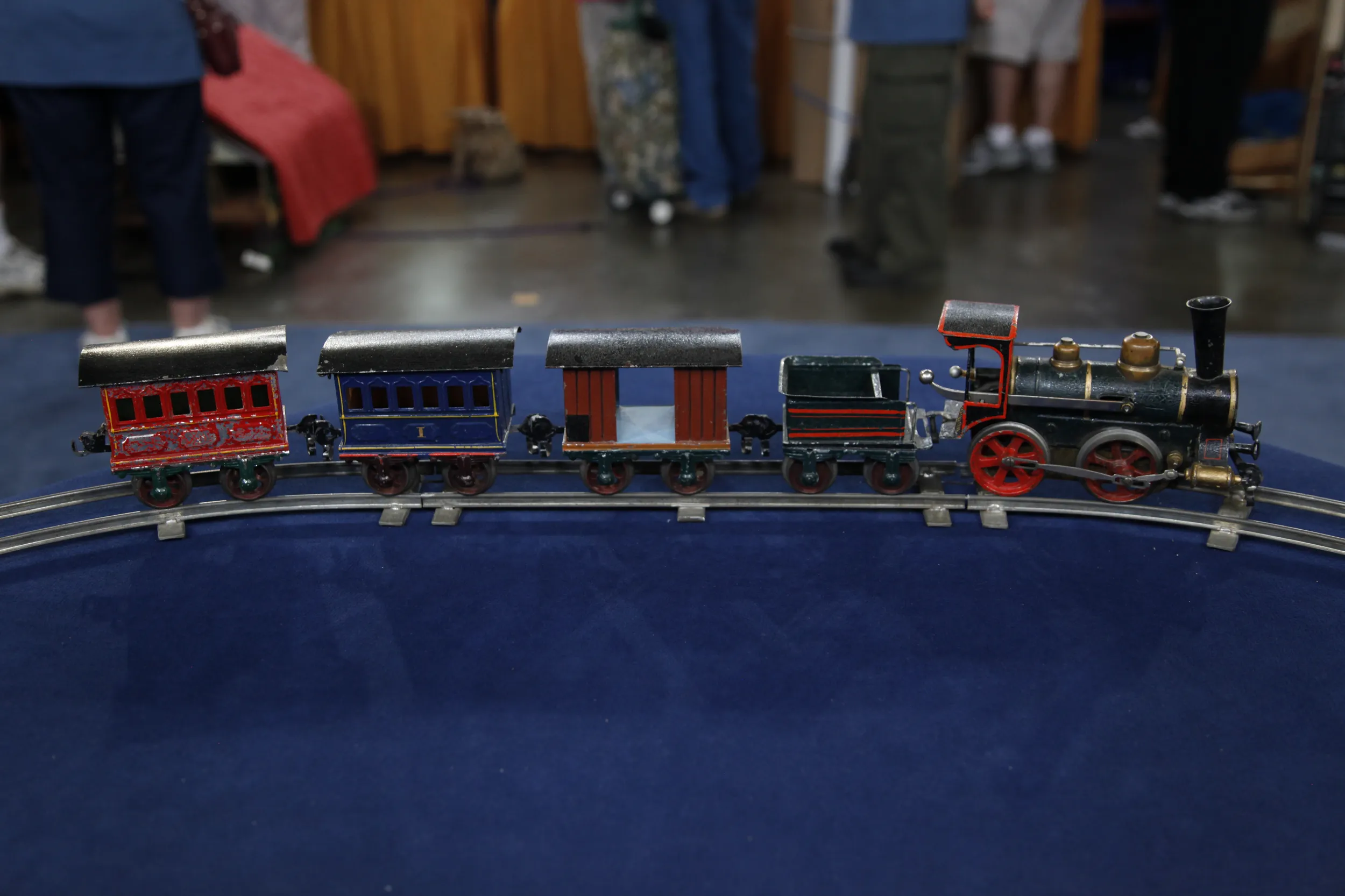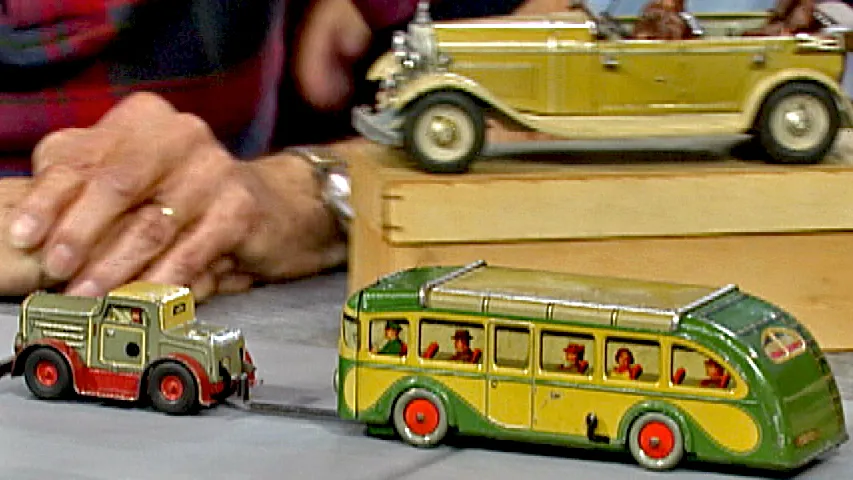GUEST: I saw this object at my husband's grandfather's house, and he always had it displayed on his hutch, except when someone would come, like a repairman or something, and he would wrap it up and hide it in the blanket chest when that happened, so I knew that was a special object to them, and the family always called it the "chocolate pot." I don't really know why, because I can't imagine making hot chocolate in it.
APPRAISER: Do you know where it's from?
GUEST: I mean, it looks Pennsylvania Dutch to me. I don't know where they got it or how long they had it, except that it was my husband's grandfather's mother's family that it came down from.
APPRAISER: It is a great example of Pennsylvania Dutch tinware. The technique is known as tole, and this is a European tradition of painting on tin and wood in this sort of whimsical folk manner. And this would have happened throughout the Pennsylvania Dutch region, which we're right in the middle of here. And a number of objects. You'd have spoons, plates, cups, canisters, tins, a whole variety of utilitarian wares. And these would be done in workshops. We don't know, necessarily, who the painters are-- almost always anonymous. They would use the colors that they had at hand. Black is the most common, in terms of the base color. So when we get examples of this really bright, vibrant red, we get excited.
GUEST: (chuckles) Oh.
APPRAISER: It's a coffeepot. So the hot and the cold, the variations in temperature, the moisture-- a lot of times what we'll see is a diminished surface-- losses, flaking, rust coming through. We see almost none of that on here, and the form we would attribute to it is "lighthouse" form. It has this wonderful gooseneck spout. The only real area of concern is the finial here on the top, which has been dented in a bit, so it had a tumble at some point. But the base is round and symmetrical, the paint is generally even. We do believe it's been varnished at some point.
GUEST: Oh!
APPRAISER: But under black light, we didn't see any in-painting or repairs, or other multiple layers of varnish that would diminish the value. The American market is sluggish except when it comes for great examples. And this is a great example of Pennsylvania tinware.
GUEST: Oh, wow. (chuckles)
APPRAISER: Dating from about 1860 to 1890, in that range. Any idea of the value on a piece like this?
GUEST: No, I mean, I don't think anyone's ever had it appraised. I mean, I didn't... I like it just because it's pretty, but I don't really think that it has a whole lot of value.
APPRAISER: It is pretty, and when we talk about value, all those things about the condition, which are so great about it...
GUEST: Right.
APPRAISER: ...really matter. And, in this case, they matter for all the right reasons, in terms of the value. I think at auction, in today's market, we'd be looking at around $7,000 to $9,000 at auction.
GUEST: Are you kidding me? (laughs)
APPRAISER: No. This is one of the finest pieces of tinware...
GUEST: Are you kidding me?
APPRAISER: ...in Pennsylvania that we've seen. Yeah, it's phenomenal.
GUEST: Oh, my God! Never in a million years would I have thought that.









